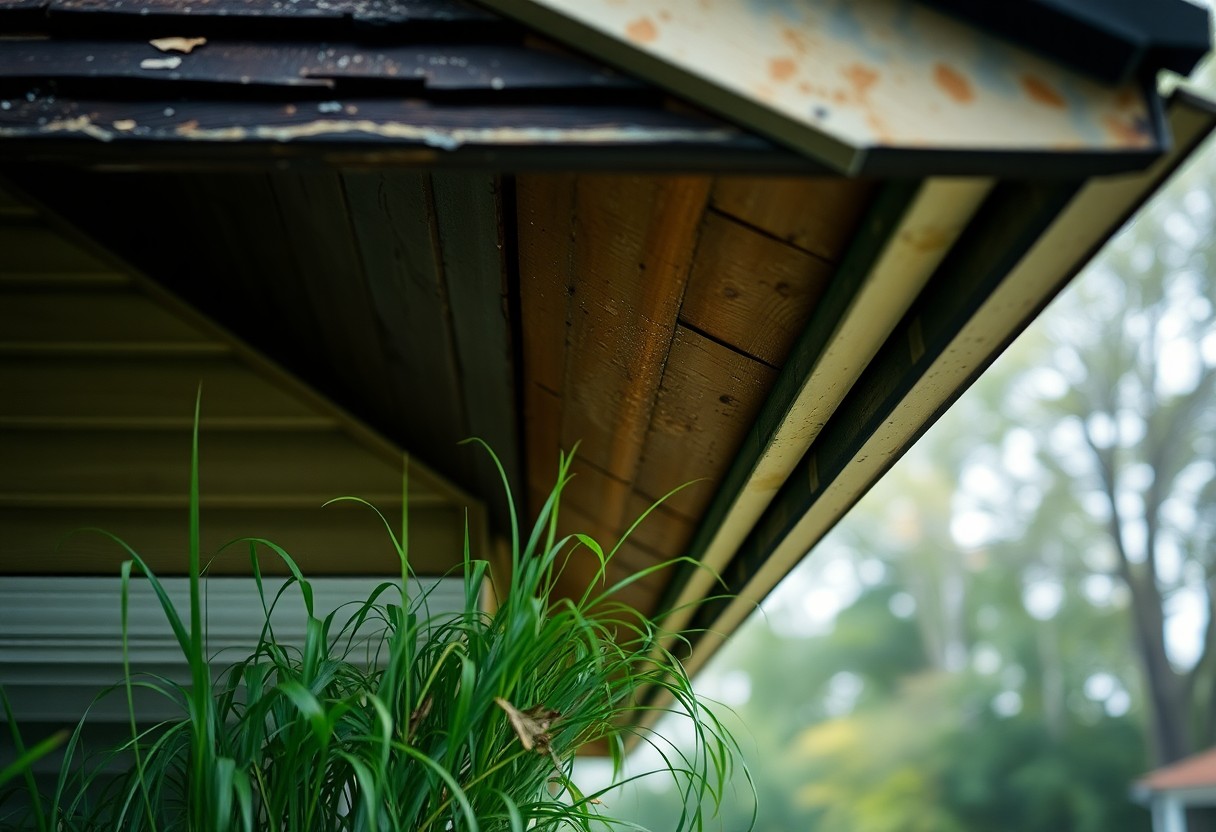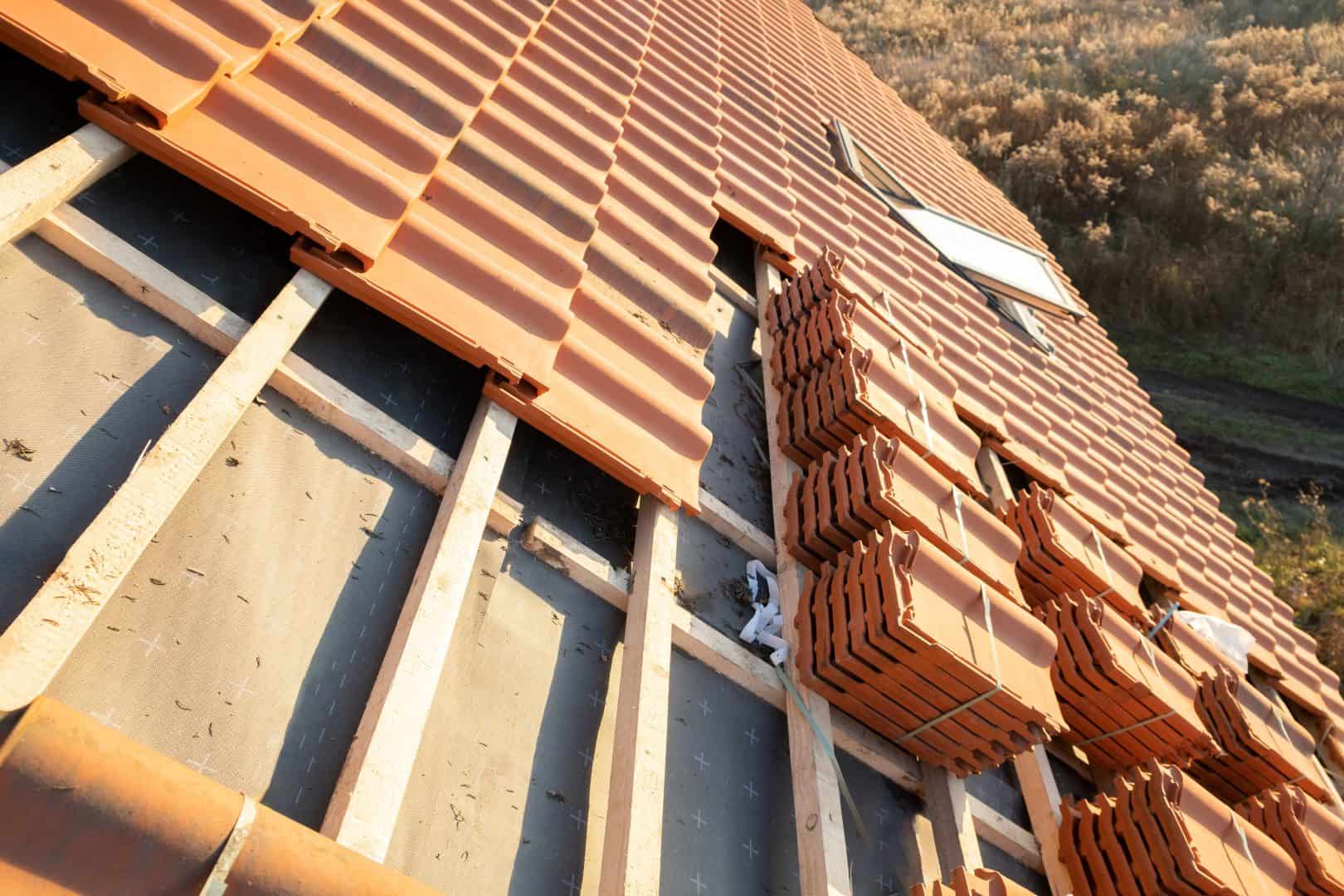What are the signs that I need a new roof?
Fill Out The Form And We'll Get Back To You

Just like any other part of your home, your roof requires attention and maintenance. Over time, wear and tear can lead to significant problems that may necessitate a complete replacement. Understanding the signs that indicate you might need a new roof can save you from further damage and costly repairs. In this guide, we will explore the key indicators that it’s time to invest in a new roof for your property, ensuring your home remains safe and secure.
Key Takeaways:
- Missing or Damaged Shingles: Check for any shingles that are missing, cracked, or curling, as these can indicate that your roof needs replacement.
- Water Stains on Ceilings: Look for discolouration or stains on your interior ceilings which may suggest leaks from an ageing roof.
- Granules in Gutters: If you find a build-up of granules from your shingles in the gutters, it can signify that your roof is deteriorating and may need replacing.
Age of the Roof
A roof’s age is a significant indicator of whether it needs replacing. Most roofing materials have a specific lifespan, and as your roof approaches the end of that period, you should be vigilant for warning signs. If your roof is over 20 years old, it’s necessary to assess its condition regularly, as wear and tear could lead to leaks and structural damage.
Lifespan of Different Roofing Materials
Along with age, the type of roofing material largely determines how long your roof will last. For instance, asphalt shingles typically last 20-30 years, while metal roofing can endure for 40-70 years or more. Slate and tile roofs often exceed 50 years, making them suitable long-term investments. Knowing the lifespan of your specific roofing material helps you anticipate when it might need replacing.
Signs of Aging
Different signs can indicate that your roof is aging. These include curling or missing shingles, discolouration, and the presence of granules in your gutters. Other indicators such as moss growth, sagging, or leaks in your home are also tell-tale signs that your roof may need attention. Regular inspections can help you identify these issues early on.
Indeed, recognising the signs of an ageing roof is vital to protecting your home. If you notice brown or dark streaks, it may be a sign of deterioration. In addition, if you find shingles that have turned brittle or warped, this further indicates the material is reaching the end of its useful life. By observing these symptoms early on, you can address potential problems before they escalate into more severe, costly repairs.
Visual Inspection
Any visual inspection of your roof can reveal significant signs that it may be time for a replacement. Look out for discolouration, sagging, or visible leaks. If you’re unsure about what to look for, you can find helpful insights in this discussion about Hey folks, what are the common signs that suggest it’s time ….
Missing or Damaged Shingles
Around your roof, check for any missing or damaged shingles, as these can expose your home to water damage. If you notice that several shingles are missing or broken, it’s a clear sign that your roof may need to be replaced sooner rather than later.
Warping and Curling
Damaged shingles can often lead to warping and curling, which not only affects your roof’s appearance but also compromises its effectiveness. Signs of warping and curling can indicate that the shingles are reaching the end of their lifespan, allowing for moisture intrusion and potential leaks.
In addition to the visual impact, warping and curling suggest that the roof’s protective layer is failing. This deterioration can make your home susceptible to more significant issues, such as mould growth and structural damage. Regular checks and early intervention can protect your home from these potential threats.
Interior Signs of Damage
All homeowners should be vigilant about the interior signs of roof damage. If you see unusual marks or alterations within your home, it often indicates an underlying roofing issue. For further details, refer to the 9 Signs It’s Time to Replace Your Roof.
Water Stains on Ceilings
Ceilings that display water stains are a strong signal that your roof may require attention. These discolourations usually mean water is infiltrating, leading to possible long-term damage. Addressing this issue promptly can prevent further costs and complications.
Mold and Mildew Growth
Around your home, mould and mildew growth often suggest moisture problems linked to roofing issues. These substances thrive in damp conditions, and their presence may indicate that your roof is failing to properly shield your home from the elements.
Mould can not only damage your interior but also pose health risks for you and your family. If you notice persistent mould or mildew, it is vital to inspect your roof and consider replacement options. Ignoring these warning signs could lead to more significant issues in the long run.
Granule Loss
Noticing granule loss on your roof can be a clear indicator that it’s time for a replacement. These granules protect your roofing material from UV rays and weather elements, and their absence can lead to significant deterioration. If you’re unsure about your roof’s condition, check out this My roof is 20 years old. It looks perfectly fine with no signs … discussion for more insights.
Understanding Granule Function
Above all, granules serve an important function to your roof. They provide a protective layer that shields the underlying materials from harmful UV rays and inclement weather conditions. Additionally, granules assist in creating friction, which helps prevent slipping. Without them, your roof becomes more susceptible to damage and can lead to costly repairs.
Assessing Granule Deterioration
By closely inspecting your roof, you can assess the extent of granule deterioration. Look for bare patches where granules have washed away, as these areas indicate wear and may require immediate attention. If you find excessive granule loss, it could be time to consider a roof replacement to ensure your home remains protected.
Understanding the condition of your roof is vital. Use binoculars to carefully inspect the surfaces, or check your gutters for accumulated granules, as this can indicate significant wear. Regular inspections can prevent unexpected issues and costly repairs down the line. If you find that your roof’s granules are noticeably diminished, it may be wise to consult a professional to evaluate your roofing needs.
Roof Leaks
For homeowners, roof leaks are a clear sign that you may need a new roof. These leaks can lead to significant damage if left unaddressed, potentially compromising the integrity of your entire structure. Keeping an eye out for water stains on ceilings and damp patches on walls can help you identify issues early. If you notice any signs of water infiltration, it’s advisable to investigate further or consult a professional.
Identifying Leak Sources
Sources of roof leaks can vary widely, with common culprits including damaged shingles, cracked flashing, and clogged gutters. Inspect your roof regularly and look for signs of wear or damage; these can indicate where a leak may be originating. Pay special attention to areas around vents and chimneys, as these are often vulnerable points for water intrusion.
Consequences of Ignored Leaks
Roof leaks, when ignored, can lead to extensive damage, including mould growth and structural deterioration. The longer you allow a leak to persist, the more difficult and costly the repairs will become. Not only can this affect your home’s aesthetics, but it can also decrease its market value. Furthermore, the health risks associated with mould and dampness can impact your family’s well-being. Act promptly to avoid these serious consequences.
Ignored leaks can escalate into far greater problems than mere cosmetic damage. Beyond the immediate issues of water damage and structural concerns, persistent leaks may lead to rotting wood, compromised support beams, and even electrical hazards. Addressing leaks early on is vital not only for the longevity of your roof but also for ensuring a safe and healthy living environment for you and your family.
Energy Efficiency
Your roof plays a significant role in the overall energy efficiency of your home. If it’s worn or damaged, you may notice that your heating and cooling systems have to work harder to maintain a comfortable temperature. Investing in a new roof can help reduce energy consumption and lead to savings on your utility bills, while also enhancing the comfort of your living space.
Increased Energy Bills
Energy prices seem to rise consistently, but if you’re experiencing a drastic increase in your energy bills, it could indicate a failing roof. Damaged or aged roofing materials can lead to heat loss in winter and excessive heat gain in summer, forcing your HVAC system to work overtime and driving up costs.
Heat Escaping Through the Roof
On cold days, you may notice that certain areas of your home feel drafty, which could be a sign that heat is escaping through your roof. This not only makes your living space uncomfortable but can also lead to increased energy expenses as your heating system struggles to keep up.
Heat lost through an inadequately insulated or damaged roof contributes significantly to energy inefficiency. If your home feels particularly chilly, it may indicate that warm air is seeping out through cracks or gaps. Addressing these issues with a new roof not only improves comfort but can also result in lower energy bills and a smaller carbon footprint.
Conclusion
As a reminder, several signs indicate that you may need a new roof. Look for missing or cracked tiles, sagging areas, or leaks during rain. If your roof is over 20 years old, or you notice significant granule loss in your gutters, it’s time to consider a replacement. Additionally, a musty smell in your attic can signify trapped moisture and potential structural damage. Regular inspections are vital to ensuring your home remains safe and protected, so stay vigilant and proactive about your roofing needs.
FAQ
Q: What are the common signs indicating that I may need a new roof?
A: There are several noticeable signs that might suggest your roof is in need of replacement. These include frequent leaks or water stains on your ceilings and walls, which indicate that water is penetrating through the roof’s surface. Additionally, if you observe missing, cracked, or curled shingles, this can be a strong sign that your roof has become compromised. Finally, if you notice sagging or visible wear in the roof decking, it is advisable to seek an inspection as this could indicate structural issues that necessitate a new roof.
Q: How can I tell if my roof is nearing the end of its lifespan?
A: The lifespan of a roof varies depending on the materials used and the climate conditions in your area. Typically, asphalt shingles last around 20 to 25 years, while metal roofs can last 40 years or more. Signs that your roof may be nearing the end of its lifespan include the presence of granules in your gutters, excessive wear on shingles, or consistent issues with leaks. It’s also wise to consider how often you’ve had to conduct repairs; frequent maintenance might signal that it’s time for a full replacement.
Q: Is it necessary to hire a professional to assess my roof’s condition?
A: While it is possible for homeowners to conduct a visual inspection of their roofs, hiring a professional is often advisable for a thorough assessment. Professionals are trained to identify subtle signs of damage that may not be obvious to untrained eyes. They can also provide insights regarding the overall condition of your roof and recommend whether repairs or a full replacement is warranted. Additionally, many roofing experts can offer guidance on the best materials and installations suited to your property.
Re-Roof of Bungalow
The guys made a fantastic job of replacing the roof on our bunglaow. They were fasy, relaible and excellent value for money.
Chimney Removal
We employed Wrights Roofs to take down our very old chimney – tht had seen better days. They carefully removed and made good the area where the chimney was. Really impressed.
New Roof
We had an extension built and Wrights came and put a new roof on. They were brilliant, no fuss, great value for money. Thank you.
Roofs, Flat Roofs Chimneys and Solar Panels
If you need roof work on your home, please complete the form or call us today.

